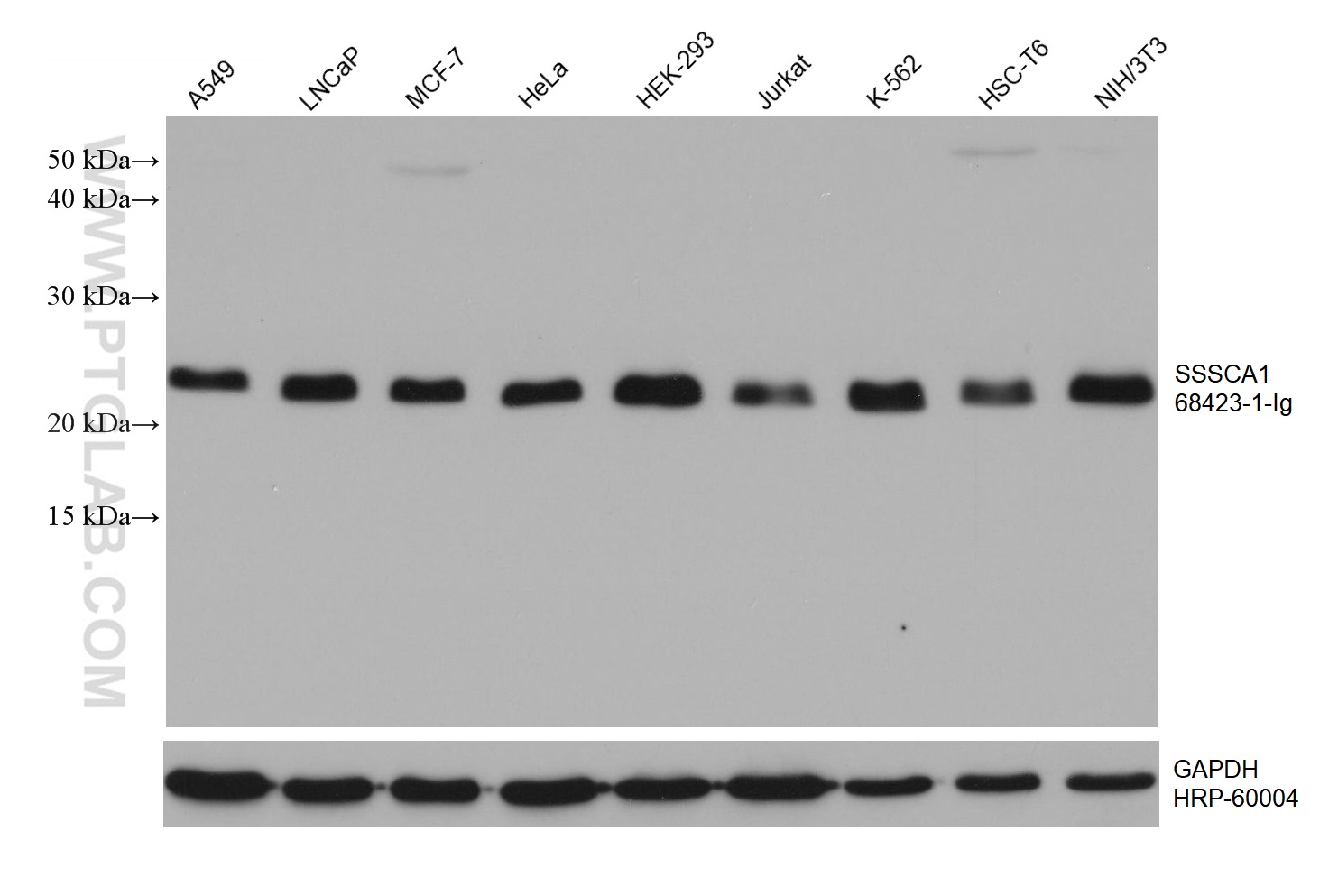验证数据展示
经过测试的应用
| Positive WB detected in | A549 cells, LNCaP cells, MCF-7 cells, HeLa cells, HEK-293 cells, Jurkat cells, K-562 cells, HSC-T6 cells, NIH/3T3 cells |
| Positive IF/ICC detected in | HeLa cells |
推荐稀释比
| 应用 | 推荐稀释比 |
|---|---|
| Western Blot (WB) | WB : 1:2000-1:10000 |
| Immunofluorescence (IF)/ICC | IF/ICC : 1:200-1:800 |
| It is recommended that this reagent should be titrated in each testing system to obtain optimal results. | |
| Sample-dependent, Check data in validation data gallery. | |
产品信息
68423-1-Ig targets SSSCA1 in WB, IF/ICC, ELISA applications and shows reactivity with Human, mouse, rat samples.
| 经测试应用 | WB, IF/ICC, ELISA Application Description |
| 经测试反应性 | Human, mouse, rat |
| 免疫原 | SSSCA1 fusion protein Ag16783 种属同源性预测 |
| 宿主/亚型 | Mouse / IgG1 |
| 抗体类别 | Monoclonal |
| 产品类型 | Antibody |
| 全称 | Sjogren syndrome/scleroderma autoantigen 1 |
| 别名 | Autoantigen p27, p27, SSSCA1, ZNRD2 |
| 计算分子量 | 199 aa, 21 kDa |
| 观测分子量 | 23 kDa |
| GenBank蛋白编号 | BC014791 |
| 基因名称 | SSSCA1 |
| Gene ID (NCBI) | 10534 |
| RRID | AB_3085138 |
| 偶联类型 | Unconjugated |
| 形式 | Liquid |
| 纯化方式 | Protein G purification |
| UNIPROT ID | O60232 |
| 储存缓冲液 | PBS with 0.02% sodium azide and 50% glycerol , pH 7.3 |
| 储存条件 | Store at -20°C. Stable for one year after shipment. Aliquoting is unnecessary for -20oC storage. |
背景介绍
SSSCA1, also named as Autoantigen p27, is centromere-associated protein. It may induce anti-centromere antibodies. SSSCA1 plays a role in mitosis. It's involved in Sjogren syndrome/scleroderma. The calculated MW of SSSCA1 is 21.5 kDa (native form), with modification the MW is about 23-27 kDa.
实验方案
| Product Specific Protocols | |
|---|---|
| WB protocol for SSSCA1 antibody 68423-1-Ig | Download protocol |
| IF protocol for SSSCA1 antibody 68423-1-Ig | Download protocol |
| Standard Protocols | |
|---|---|
| Click here to view our Standard Protocols |

